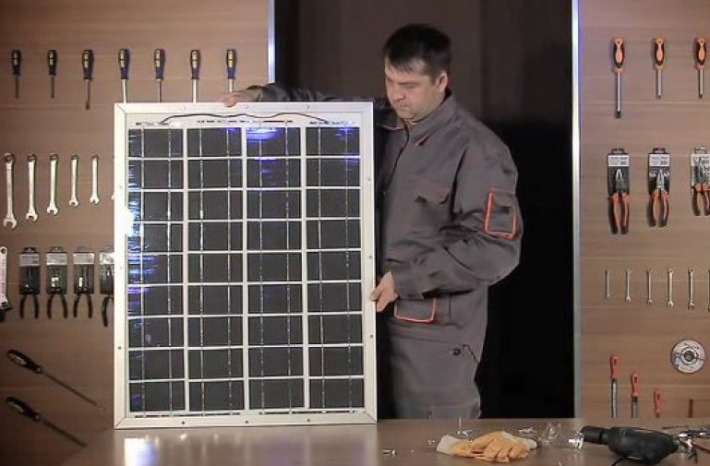How is electricity produced conventionally?
Conventionally, electricity is produced by moving colossal turbines. These turbines are moved with the help of various types of energy. Let’s look at the most conventional ways of producing electrical energy:
• By using various fuels and water - Water is heated on a large scale in furnaces. The vapor generated helps move the blades of turbines. Fuels such as petroleum, coal and natural gas are used to heat large quantities of water.
• By nuclear fission - Electricity is produced in nuclear reactors by making use of the heat generated in the chain reaction caused by nuclear fission. This heat boils water on a large scale converting it into vapor that turns the blades of the turbines.
• By bio-waste - Electricity is now also being produced by burning bio-fuels instead of fossil fuels. Bio-fuels are obtained from biological waste, mainly from plants. Bio-fuels are considered safer than fossil fuels.
• By hydro-power - Water is also a popular method of producing electricity. Rivers and large bodies of water are used to move huge turbines. Though this method of electricity production does not affect the air around us, it spoils the ecological balance inside the water bodies.
• By wind - Electricity is produced by wind generators. These wind generators convert wind energy into mechanical energy which is further converted into electrical energy.
Why is there a need to look for alternate electricity sources?
Alternate power solutions are needed in the light of highly-depleting fuel and energy sources. Moreover, most of the conventional ways of producing electricity harms the environment in one way or another.
The world is currently faced with a tremendous power-crisis. We can no longer depend on fossil fuels for power. At the same time, we need to take measures to prevent the harmful effects that conventional power production has on the environment.
How can we produce electricity?
In times of global power crisis and severe environmental damage, the question is: what can we do to help? We can do plenty if we want to. We need to start with consuming less power. Next, we can employ any of the following energy solutions to make electricity:
• Wind power solution – Installing a wind turbine can help generate electricity for our homes and farms.
• Solar power solution – Using the solar power to cook, light up and heat our homes is a wise idea.
• Bio-gas – Bio-gas can be used to produce electricity on a small scale.
Make power at home with solar and wind energy to eliminate your power bill. Get our complete guide at www.earth4energy.com.
Conventionally, electricity is produced by moving colossal turbines. These turbines are moved with the help of various types of energy. Let’s look at the most conventional ways of producing electrical energy:
• By using various fuels and water - Water is heated on a large scale in furnaces. The vapor generated helps move the blades of turbines. Fuels such as petroleum, coal and natural gas are used to heat large quantities of water.
• By nuclear fission - Electricity is produced in nuclear reactors by making use of the heat generated in the chain reaction caused by nuclear fission. This heat boils water on a large scale converting it into vapor that turns the blades of the turbines.
• By bio-waste - Electricity is now also being produced by burning bio-fuels instead of fossil fuels. Bio-fuels are obtained from biological waste, mainly from plants. Bio-fuels are considered safer than fossil fuels.
• By hydro-power - Water is also a popular method of producing electricity. Rivers and large bodies of water are used to move huge turbines. Though this method of electricity production does not affect the air around us, it spoils the ecological balance inside the water bodies.
• By wind - Electricity is produced by wind generators. These wind generators convert wind energy into mechanical energy which is further converted into electrical energy.
Why is there a need to look for alternate electricity sources?
Alternate power solutions are needed in the light of highly-depleting fuel and energy sources. Moreover, most of the conventional ways of producing electricity harms the environment in one way or another.
The world is currently faced with a tremendous power-crisis. We can no longer depend on fossil fuels for power. At the same time, we need to take measures to prevent the harmful effects that conventional power production has on the environment.
How can we produce electricity?
In times of global power crisis and severe environmental damage, the question is: what can we do to help? We can do plenty if we want to. We need to start with consuming less power. Next, we can employ any of the following energy solutions to make electricity:
• Wind power solution – Installing a wind turbine can help generate electricity for our homes and farms.
• Solar power solution – Using the solar power to cook, light up and heat our homes is a wise idea.
• Bio-gas – Bio-gas can be used to produce electricity on a small scale.
Make power at home with solar and wind energy to eliminate your power bill. Get our complete guide at www.earth4energy.com.



